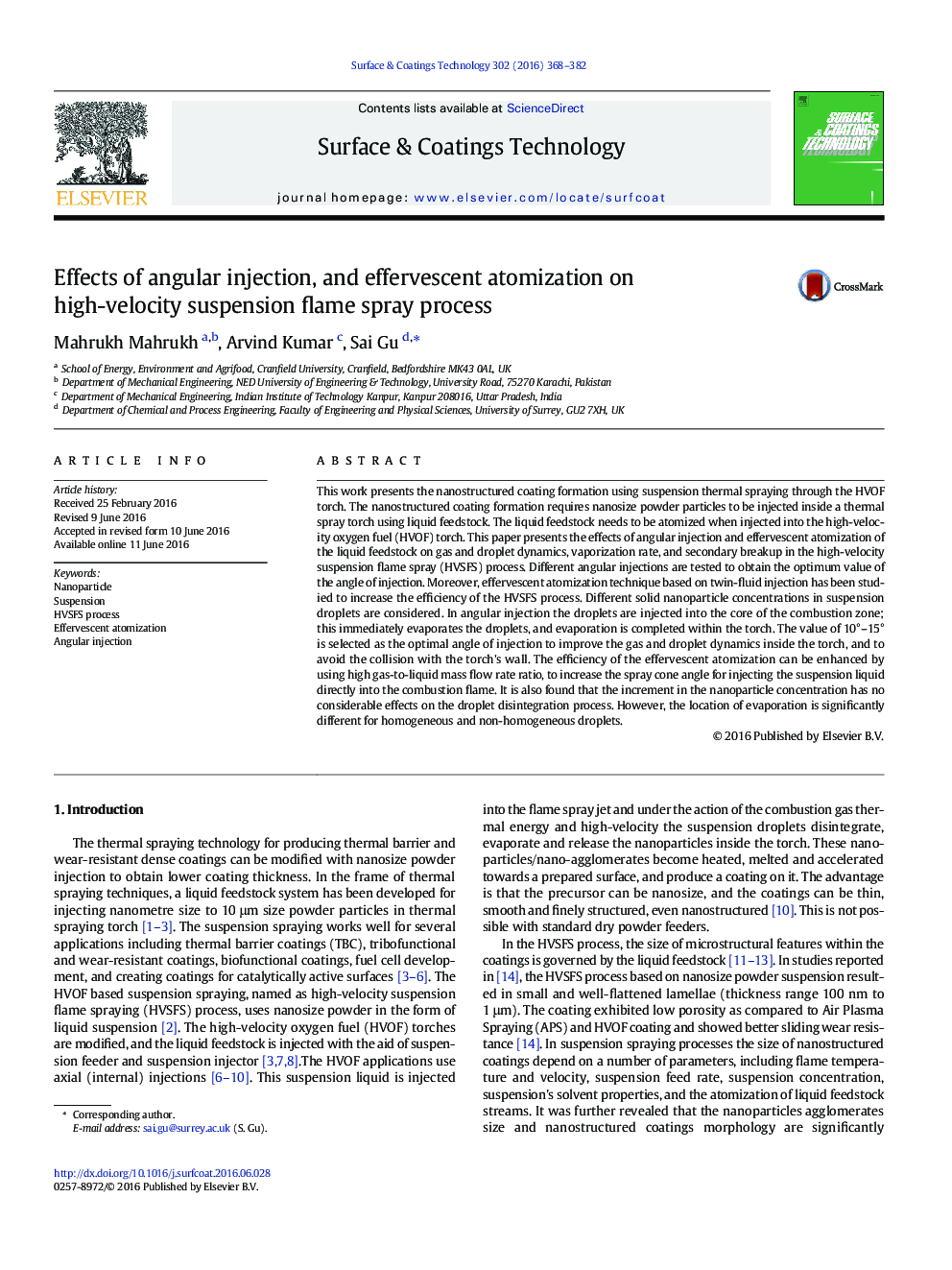| Article ID | Journal | Published Year | Pages | File Type |
|---|---|---|---|---|
| 8025272 | Surface and Coatings Technology | 2016 | 15 Pages |
Abstract
This work presents the nanostructured coating formation using suspension thermal spraying through the HVOF torch. The nanostructured coating formation requires nanosize powder particles to be injected inside a thermal spray torch using liquid feedstock. The liquid feedstock needs to be atomized when injected into the high-velocity oxygen fuel (HVOF) torch. This paper presents the effects of angular injection and effervescent atomization of the liquid feedstock on gas and droplet dynamics, vaporization rate, and secondary breakup in the high-velocity suspension flame spray (HVSFS) process. Different angular injections are tested to obtain the optimum value of the angle of injection. Moreover, effervescent atomization technique based on twin-fluid injection has been studied to increase the efficiency of the HVSFS process. Different solid nanoparticle concentrations in suspension droplets are considered. In angular injection the droplets are injected into the core of the combustion zone; this immediately evaporates the droplets, and evaporation is completed within the torch. The value of 10°-15° is selected as the optimal angle of injection to improve the gas and droplet dynamics inside the torch, and to avoid the collision with the torch's wall. The efficiency of the effervescent atomization can be enhanced by using high gas-to-liquid mass flow rate ratio, to increase the spray cone angle for injecting the suspension liquid directly into the combustion flame. It is also found that the increment in the nanoparticle concentration has no considerable effects on the droplet disintegration process. However, the location of evaporation is significantly different for homogeneous and non-homogeneous droplets.
Related Topics
Physical Sciences and Engineering
Materials Science
Nanotechnology
Authors
Mahrukh Mahrukh, Arvind Kumar, Sai Gu,
